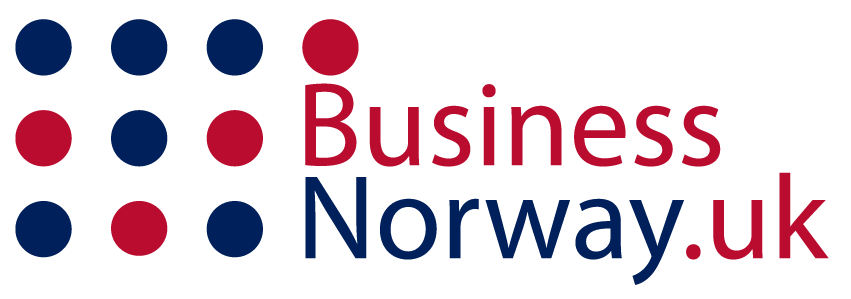Starting our journey into interior design in Norway, we find a landscape full of chances for new designers. The unique look and culture of Scandinavia shape design here, making it a great place to start a career. We’ll explore key education, skills, and practices for success in this field.
Knowing the local influences and needs helps us prepare for a rewarding career in interior design.
Understanding the Role of an Interior Designer
Being an interior designer is about creating spaces that are both functional and beautiful. We look at the main tasks of interior designers. We also talk about the key skills needed to succeed in this field.
Key Responsibilities of Interior Designers
Interior designers help make a client’s dream space come true. Their main jobs are:
- Creating designs that fit the client’s wishes and needs.
- Picking the right materials, finishes, and furniture.
- Working with clients, builders, and others to make the design process smooth.
- Creating detailed plans, like layouts and pictures.
- Managing the project’s time and money well.
Essential Skills for Aspiring Designers
To do well in design, you need some key skills. These are:
- Creativity and artistic vision to come up with new ideas.
- Good problem-solving skills to solve design problems.
- Effective communication to share ideas and work with others.
- Attention to detail to ensure quality and meet client needs.
- Project management skills to stay organised during the design process.
The Importance of Interior Design in Norway
In Norway, interior design is more than just looks. It affects how spaces work and feel. Our designs blend with our culture and show in modern trends. Every part of a space shows our values, lifestyle, and love for nature.
Cultural Influences on Design Trends
Norwegian interiors take inspiration from our beautiful nature and traditions. We use clean lines and simple shapes to make spaces welcoming. Traditional materials like wood and stone are key, showing our bond with nature and the value of good design.
Sustainable Practices in Norwegian Interior Design
Sustainability is key in our interior design. We use eco-friendly materials and methods because they’re essential. By making smart choices, we aim to reduce our impact on the environment. This shows how interior design can positively shape our homes and the world.
Educational Pathways to Becoming an Interior Designer
If you want to be an interior designer, knowing the educational paths is key. We’ll look at the qualifications and certifications you need. Plus, we’ll highlight top design schools in Norway. A strong education is the first step to success in this field.
Necessary Qualifications and Certifications
To work as an interior designer, you need certain qualifications and certifications. Most designers have a degree in interior design or a related field. Getting accredited by recognised bodies boosts your career. Important certifications include:
- Bachelor’s degree in Interior Design or Architecture
- Master’s degree for advanced expertise
- Certification from the National Council for Interior Design Qualification (NCIDQ)
Recommended Schools and Programmes in Norway
Choosing design schools in Norway is an exciting adventure. Many schools offer detailed programmes for future designers. Here are some top schools for quality interior design education:
| School | Location | Programmes Offered |
|---|---|---|
| Oslo Metropolitan University | Oslo | Bachelor’s in Interior Architecture |
| Norwegian School of Design and Craft | Bergen | Master’s in Design |
| University of Bergen | Bergen | Bachelor’s in Architecture |
Building a Portfolio as an Interior Designer
Creating a strong interior design portfolio is key. It shows off our skills and creativity. It also serves as a marketing tool. A good portfolio should show our unique style and versatility.
Here are some tips to make a compelling portfolio:
Tips for a Compelling Design Portfolio
- Include a variety of project types: From residential to commercial spaces, diverse projects illustrate our adaptability.
- Focus on quality over quantity: Select only our best work to maintain a professional image.
- Arrange projects by theme or style: This helps clients see our design philosophies.
- Document the process: Show before-and-after images or sketches to highlight our creative process.
- Seek feedback: Get insights from peers or mentors to improve our portfolio.
Showcasing Your Work Effectively
When showing our work, presentation matters. Make sure the portfolio looks good and is easy to use. High-quality images are essential.
Here are some strategies:
- Use consistent formatting: Uniformity in font, layout, and colour palette makes it professional.
- Write engaging project descriptions: Brief stories about each project can grab attention and provide context.
- Incorporate testimonials: Positive feedback from clients adds credibility.
- Utilise digital platforms: Online portfolios are easy to share and reach more people.
By following these tips, we can make an impressive portfolio. It will showcase our work well and stand out in a competitive market.
Establishing Your Interior Design Business
Starting an interior design business in Norway needs careful thought. We must consider the business structure and how to form a company. Knowing these things helps lay a solid base for success in design.
Choosing the Right Business Structure
Choosing the right business structure is key for any new business. In Norway, you can pick from sole proprietorship, partnerships, or limited liability companies (ANS, DA, AS). Each has its own benefits and legal rules. For example:
- Sole Proprietorship: It’s easy to manage and tax, but doesn’t protect personal assets.
- Partnership: Good for businesses with more than one founder; shares profits and duties.
- Limited Liability Company (AS): Protects personal assets, making it a top choice for interior design businesses.
We need to think about our goals and resources when picking the best structure for our business.
Steps to Company Formation in Norway with LerriHost
Starting a company in Norway is easier with LerriHost’s help. They make the process simpler for new designers. Here’s how to do it:
- Business Name Registration: Pick and register a unique name with the Norwegian Business Registry.
- Prepare Required Documentation: Get the needed documents like ID and residency proof.
- Register for VAT: If we expect to make over the VAT limit, we must register for VAT.
- Open a Business Bank Account: A separate account keeps finances organised.
- Obtain Permits and Licences: Get any special permits needed for interior design work.
Working with LerriHost helps us overcome challenges and start our interior design business well.
Navigating Norwegian Regulations and Licences
It’s key to know the interior design rules in Norway if you want to be a designer. Following these rules makes sure our work is legal and safe. We need to understand the licences needed and the building codes that guide our projects.
Required Licences for Designers
To work as an interior designer in Norway, you must get the right licences. These show we’re skilled and follow the rules. The main licences are:
- Architect licence
- Interior designer certification
- Construction-related business licence
Getting each licence involves meeting certain criteria. This includes education and work experience checks.
Understanding Building Codes and Standards
Knowing the local building codes is essential. These codes set the rules for building and design changes. They cover safety, access, and energy use.
Not following these rules can cause delays, legal issues, and safety risks. Our designs must meet these standards to be safe and useful.
Leveraging Nominee Services in Norway
In Norway, nominee services are key for foreign entrepreneurs. They help with setting up and managing a business. This makes entering the Norwegian market easier. Knowing about nominee services can improve our business strategy.
What are Nominee Services?
Nominee services mean a company or person acts for another. In Norway, they help with local market knowledge and legal needs. They keep personal info safe, helping us follow the law without revealing our identity.
Benefits of Using Nominee Services for Your Business
Using nominee services brings many benefits for our business in Norway:
- Anonymity: We can keep our personal info private, protecting our identity.
- Compliance Support: They ensure we follow local laws, reducing legal risks.
- Market Expertise: Local reps give us insights into the market, helping our plans.
- Streamlined Processes: They make setting up a business faster, which is great in a new place.
Banking and Payment Processing Solutions
Starting a design business in Norway needs good banking and payment options. A solid banking partner helps with smooth money handling. Good payment systems make dealing with clients and suppliers easy. Knowing these key points can really help our design business grow.
Choosing the Right Bank for Your Design Business
Choosing a bank for our design business is important. We should think about a few things:
- Accessibility: Find a bank with services that fit our needs.
- Fees: Check the costs, like account fees and transaction charges, to keep our budget in check.
- Services Offered: Make sure the bank has services like business loans and credit options.
- Technology: Choose banks with easy-to-use online services for better money management.
Payment Processing Options for Interior Designers
Good payment systems are key for managing money in our design business. Here are some top choices:
- Online Payment Gateways: Tools like PayPal and Stripe make online payments simple for clients.
- Mobile Payment Solutions: Services like Square let us take payments anywhere, making it easy for clients too.
- Bank Transfers: Direct bank transfers are safe and easy to track for clients.
- Invoices and Billing Software: Tools like QuickBooks help us send invoices and track payments easily.
Financial Services for Your Design Venture
Knowing the financial world is key for any interior design business. Good financial management helps us succeed in our projects. It keeps them profitable and of high quality. With the right budgeting and financial services, we make better choices and get better results.
Budgeting for Your Interior Design Projects
Having a solid budget is the foundation of our projects. It helps us plan and avoid problems. We need to think about:
- Materials: Include all fabrics, furniture, and decorations
- Labour Costs: Remember to pay contractors and specialists
- Overheads: Don’t forget ongoing costs like rent and utilities
- Contingency Fund: Save a bit for unexpected expenses
Good budgeting lets us keep an eye on spending and adjust when needed. Tools like spreadsheets and software make tracking easier.
Managing Finances Effectively
Managing money well is just as important as budgeting. It helps us keep an eye on cash flow and how profitable our projects are. Important steps include:
- Regular Financial Reviews: Check our finances often to make smart choices
- Invoicing and Payments: Send invoices quickly to keep cash flowing
- Expense Tracking: Use apps or software to track expenses in real-time
- Financial Services Providers: Think about working with experts in creative industry finance
By using these financial management tips, our design business can grow. This lets us focus on creating amazing projects.
Leveraging SEO for Your Interior Design Business
In today’s digital world, having a strong online presence is key for interior designers. More and more people use search engines to find services. So, using effective SEO techniques is vital. Tailored WordPress strategies can help us get noticed by more people.
Importance of Online Presence
Having a strong online presence does more than just show off our designs. It lets us connect with clients personally. By using engaging content and the right keywords, we can get more people to find us. A website that’s good for search engines means more people looking for our help.
SEO Strategies Specific to WordPress
Using specific WordPress strategies can make our website much better. Here are some tips:
- Optimising page titles and meta descriptions for relevant keywords.
- Using image alt tags to describe our portfolio images accurately.
- Incorporating internal and external links within our content to establish credibility and authority.
- Creating high-quality, informative blog posts that reflect our design philosophy.
- Ensuring the website is mobile-friendly and loads quickly to improve user experience.
By following these tips, we can improve our search engine rankings. This will help us connect better with our future clients. It will also help us grow our interior design business.
Designing Your Interior Design Website
Having a strong online presence is key for interior designers. A good website is like a portfolio, a business card, and a way to talk to clients. We need to focus on important features and consider using WordPress designers for custom solutions.
Key Features of a Successful Design Website
- Aesthetically pleasing layout that reflects our design ethos
- Responsive design to ensure usability on various devices
- High-quality portfolio galleries showing off our work
- Easy-to-use menus for a smooth experience
- Contact forms for easy chats with clients
Hiring WordPress Designers for Custom Solutions
Working with skilled WordPress designers can boost our online space. They know how to make a website that shows off our style and services. Here’s what to look for when hiring:
- Check their portfolio for interior design work
- Ask about their SEO knowledge
- Talk about customising the site to fit our needs
Ongoing Maintenance for Your Design Website
Regular website maintenance is key to our design websites’ success. It keeps our sites working well, looking good, and safe. By doing regular WordPress updates, we make our sites better for users and search engines. This effort boosts our online presence.
Importance of Regular Website Updates
Keeping our design websites up to date is essential. Updates bring new features and security fixes, making our sites better. Old themes and plugins can harm our site’s safety and how it’s seen by search engines. Regular updates protect our site and keep it running smoothly.
Best Practices for WordPress Maintenance
Effective website maintenance is critical for interior design businesses. Here are some best practices to keep our WordPress sites in great shape:
- Schedule regular backups to prevent data loss.
- Audit and update plugins and themes periodically for security.
- Monitor website performance and fix issues swiftly.
- Ensure responsive design across all devices.
- Review and enhance SEO settings during updates.
Reliable WordPress Web Hosting Options
Choosing the right WordPress hosting is key for our interior design business online presence. The web hosting world is vast, with many choices. We need to think about performance, support, and how it can grow with our business.
Choosing the Right Hosting Service
First, we need to know what we really need. We should look at a few important things:
- Performance: Find hosting that loads fast and has little downtime.
- Support: Make sure the provider has 24/7 help for any problems.
- Scalability: Pick a plan that can grow with our business.
Comparing Hosting Providers for Interior Designers
It’s important to know the differences between hosting providers. Here’s a look at some popular ones for interior designers:
| Hosting Provider | Performance | Support | Price |
|---|---|---|---|
| Bluehost | Fast with 99.9% uptime | 24/7 live chat and phone support | Starting at £2.95/month |
| SiteGround | Optimised for speed | Expert customer support available | Starting at £3.99/month |
| WP Engine | High performance and security | Personalised support for WordPress | Starting at £22/month |
This table shows the main points of each provider. By focusing on what we need, we can pick the best hosting for our interior design business.
Marketing Your Interior Design Services
In the competitive field of interior design, marketing is key. It helps us stand out and attract clients. Online marketing and networking are great ways to show our work and meet new people.
Effective Online Marketing Strategies
To succeed online, we need to try different marketing tactics. Here are a few ideas:
- Social Media Engagement: Use Instagram and Pinterest to share our designs and talk to our followers.
- Content Creation: Start a blog or make videos to share our design tips and show we’re experts.
- Email Marketing: Create a mailing list to send out newsletters, special offers, and updates to keep in touch with everyone.
- Search Engine Optimisation (SEO): Make our website easy to find by improving its search ranking.
Networking Within the Interior Design Community
Networking is vital for our success. It helps us find new opportunities and make valuable connections. Here’s how:
- Collaborations: Working with other designers or businesses can lead to exciting projects and more clients.
- Referrals: Networking can get us more clients through word of mouth, which helps our reputation.
- Industry Events: Going to design events lets us meet others in the field and learn about new trends.
Contact Us for More Information
If you’re an interior designer looking for support, LerriHost is here to help. We offer the resources you need to succeed in this competitive field. Our goal is to make sure your design services attract clients.
How to Reach LerriHost
It’s easy to get in touch with us. Just email our customer service or call us during business hours. Our team is eager to answer any questions or concerns you have. We’re here to ensure you get the best support for your design business.
Our Services and Specialisations at LerriHost
At LerriHost, we focus on key areas for designers. We help with company formation, nominee services, and digital marketing for interior designers. Our aim is to simplify the business side, so you can excel in creating beautiful interiors.







